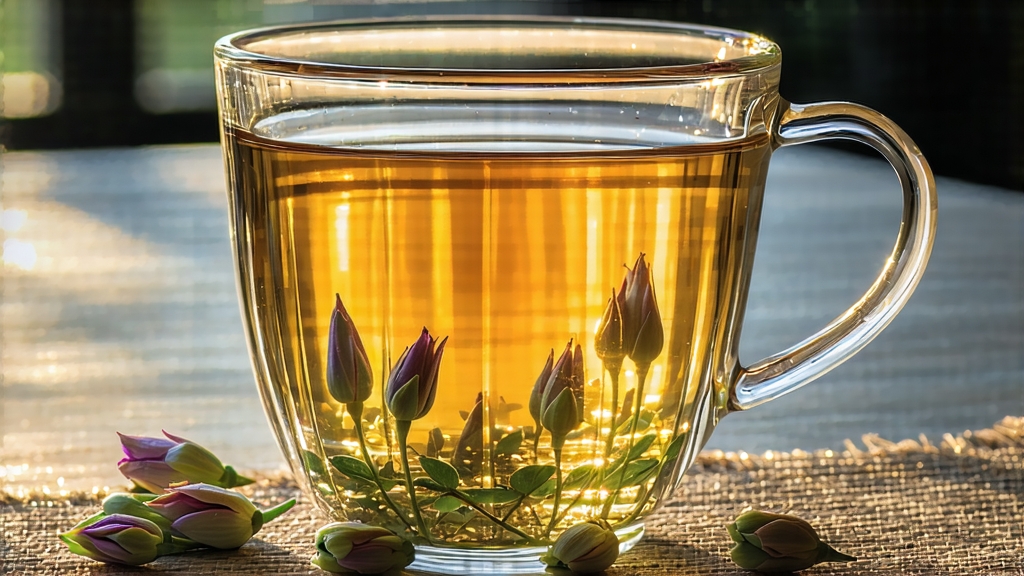
If green tea is the youthful face of Chinese tea culture and pu-erh its venerable elder, then white tea is the culture’s quiet dreamer—barely oxidized, gently sun-kissed, and wrapped in legend. Among the six major tea families, white tea alone carries the aura of “the less done, the better,” and within that minimalist realm Bai Hao Yin Zhen—literally “White Hair Silver Needle”—reigns as the purest expression of leaf, air, and time. To international drinkers accustomed to bold blacks or grassy greens, Silver Needle can first appear almost too subtle, yet its delicacy is precisely its power. One sip taken with attention reveals why Song-dynasty poets compared it to “drinking moonlight,” and why modern biochemists praise it for the highest catechin-to-caffeine ratio found in any tea. This article invites you to travel from Tang-dynasty cliffs to 21st-century glass labs, tracing the journey of a tea that is picked for only ten mornings each year and yet can age gracefully for decades.
-
Historical whispers
White tea’s written record begins in the Song dynasty (960-1279), when Emperor Huizong—himself a gifted calligrapher—praised “white buds from Fujian” in his Treatise on Tea. Those buds were compressed into cakes, steamed, then ground to powder for whisking, much like matcha. The leap from cake to loose, sun-dried Silver Needle occurred during the late Ming drought of 1630–1640, when tea makers lacked fuel to steam and press. They simply withered and baked the buds; the flavor was so haunting that the method survived. Export began in the 1890s through Fuzhou’s treaty port, and European royal houses adopted it as a “beauty tea,” believing its silvery down enhanced complexion. During the 1972 Nixon-Mao diplomacy, 500 g of 1957-vintage Silver Needle accompanied the panda pair Ling-Ling and Hsing-Hsing to Washington, sealing the tea’s status as liquid jade. -
Terroir: two counties, two personalities
Authentic Silver Needle comes only from Fujian province, and even there only two micro-regions are recognized by China’s National Geographic Indication: Fuding in the northeast and Zhenghe in the interior. Fuding sits on red granite hills laced with quartz; its sandy loam drains quickly, forcing the tea bush (Da Bai cultivar) to store amino acids in tight, plump buds. The resulting liquor is peach-sweet, with a cool menthol finish. Zhenghe, higher and more humid, sits on volcanic loam; the same cultivar grows more slowly, producing buds that are slightly slimmer but richer in polyphenols, yielding a deeper golden cup and orchid nose. Connoisseurs speak of “Fuding elegance” versus “Zhenghe structure,” much as wine lovers contrast Burgundy with Bordeaux. -
The craft of doing almost nothing
Harvest window: five days before and five days after Qingming (early April). Only unopened buds, 1.5–2.5 cm long, are plucked, ideally before 10 a.m. while dew still sheathes the tiny white hairs. A skilled picker can gather just 500 g of fresh buds in an hour; 30,000 buds equal 500 g of finished tea. The buds are spread on bamboo trays 1 cm thick, then left to wither for 36–48 hours in a ventilated loft. Ambient temperature 20–25 °C, humidity 65–70 %. No shaking, no turning—only a gentle breeze from an overhead ceiling fan simulating mountain air. When moisture drops to 10 %, the tea is given a “soft bake” at 40 °C for ten minutes, just enough to fix the enzymes. The entire process uses no rolling, no twisting, no high-heat kill-green; oxidation proceeds solely on cellular water, stopping naturally at 5–8 %. The final moisture target is 5 %—any lower and the silvery down will scorch; any higher and the tea risks mold during aging. -
Aging: the quiet transformation
Unlike green tea, Silver Needle improves in flavor for at least fifteen years if stored below 25 °C and 60 % humidity. Over time, the bright apricot notes recede, replaced by honeyed fig, sandalwood, and a faint medicinal coolness reminiscent with Chinese